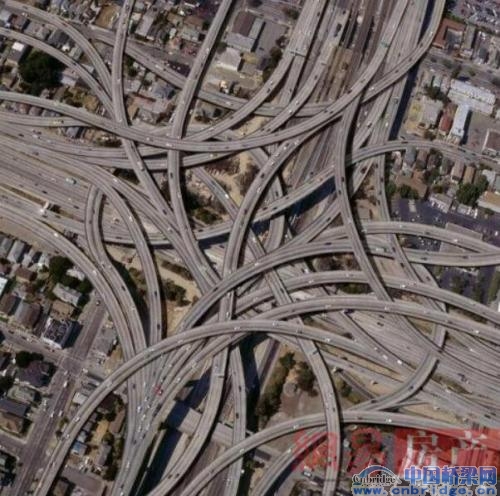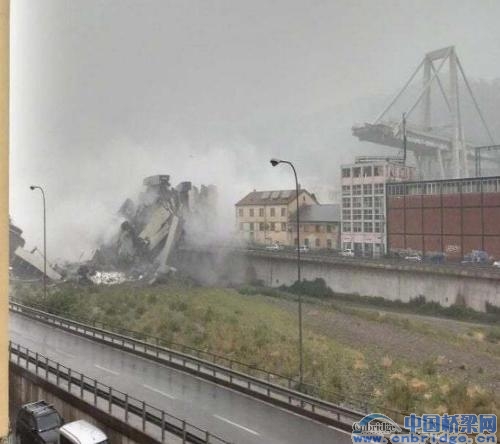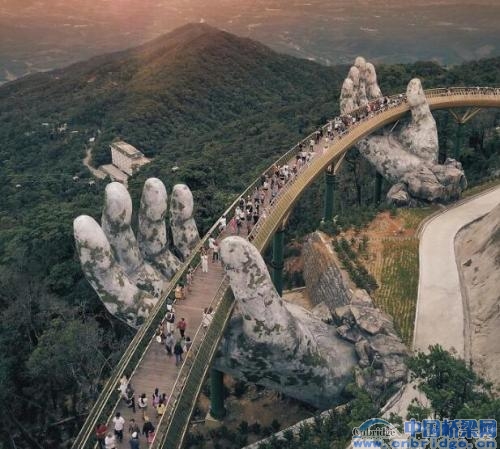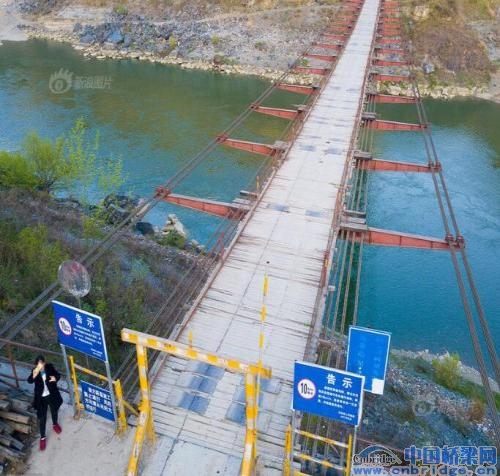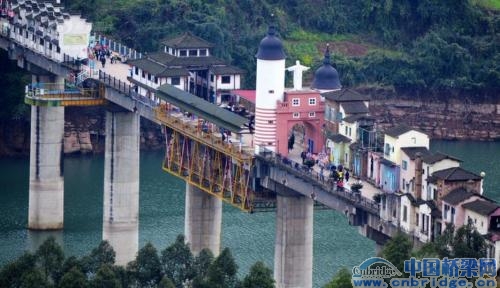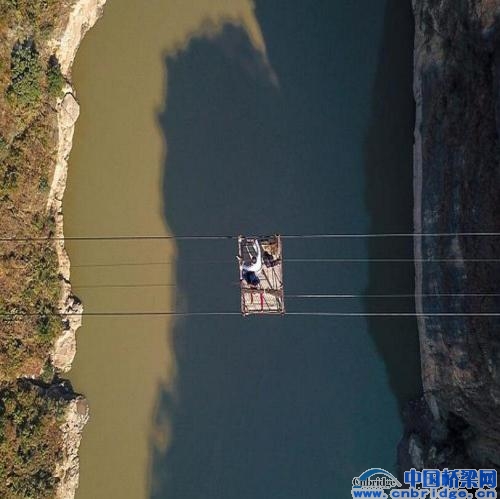橋梁建設(shè)直接反映國家實(shí)力和科技水平,各個(gè)時(shí)期、各個(gè)國家概莫能外。過去40年韓國橋梁發(fā)展迅速,其數(shù)量從1970年的9322座增至2007年的22937座、長度從268km增至1987km。橋長增加五倍而座數(shù)僅增加一倍,意味著韓國在大跨徑橋梁領(lǐng)域取得了驚人進(jìn)步,代表作有永宗大橋(自錨式懸索橋、主跨300m雙層公鐵兩用)、仁川大橋(跨徑80+260+800+260+80m,居世界斜拉橋第6位)、光陽懸索橋(主跨1545米,居世界第4位)、積金大橋(主跨850m)、木浦大橋(主跨840m)及建設(shè)中的蔚山大橋(主跨1150m)、新世紀(jì)大橋(兩個(gè)主跨650m)等。
韓國郵政自2004年9月發(fā)行《韓國的橋》系列郵票,共發(fā)行四組:第一組為2004年發(fā)行的古代橋梁,包括鎮(zhèn)川籠橋Jincheon Nongdari Bridge、傳串橋Jeongotgyo Bridge、錦川橋Geumcheongyo Bridge和升仙橋Seungseongyo Bridge;第二組為2005年發(fā)行的拱橋,包括傍花大橋Banghwa Bridge、統(tǒng)營大橋Tongyeong Bridge、漢江大橋Hangang Bridge和EXPO大橋Expogyo (Bridge);第三組為2006年發(fā)行的斜拉橋,包括奧林匹克大橋the Olympic Bridge、西海大橋Seohae Bridge、昌三大橋Changseon-Samcheonpo Bridge和珍島大橋Jindo Bridge;第四組為2007年發(fā)行的懸索橋和桁架橋,包括廣安大橋Gwangan Bridge、圣水大橋Seongsu Bridge、城山大橋Seongsan Bridge和永宗大橋Yeongjong Bridge(以上詳見《[集郵] 透過韓國郵票 體味韓國橋梁魅力(上)》)。
除此以外,韓國其他郵票上也多次出現(xiàn)了橋梁題材,比較典型的有1962年發(fā)行的《5月16日革命一周年》可見首爾漢江橋、2001年發(fā)行的《千禧系列(第11組)》郵票有首爾至釜山高速公路三層互通式立交橋、2005年發(fā)行的《2005 APEC Economic Leaders’ Meeting》可見釜山廣安大橋、2009年發(fā)行的《韓國 -巴西建交50周年》有韓國仁川大橋和巴西奧利韋拉大橋、2012年發(fā)行的《迷人的旅游目的地》可見宮南池木梁橋、2013年發(fā)行的《韓國與德國建交130周年》可見首爾景福宮醉香橋等(以上詳見《[集郵] 透過韓國郵票 體味韓國橋梁魅力(下)》)。
01、韓國的橋系列(第一組):古代橋梁Korean Bridge Series (1st):old bridges
01-1。鎮(zhèn)川籠橋Jincheon Nongdari Bridge:位于忠清北道鎮(zhèn)川世金津,忠清北道有形文化財(cái)28號(類似中國的省級文物保護(hù)單位),高麗時(shí)代后期所建,原長100m,現(xiàn)存93m。Jincheon Nongdari Bridge (Tangible Cultural Asset No. 28 of Chungcheongbuk-do Province) Located at Segeumcheon Stream in Jincheon, Chungcheongbuk-do Province, the bridge is quite unique as it is constructed of small pebbles assembled as if they were the scales of a fish. Presumed to have been built in the late Goryeo Dynasty (918-1392), the original length of the bridge is estimated to have been more than 100 meters. Now, however, the bridge is 93 meters long and only 25 piles among the original 28 remain. With a width of more than 1 meter, the bridge remains intact until this day, having withstood the harsh summer monsoon seasons even though no lime or other adhesive building material was used in construction, indicating how advanced scientific methods of construction were at the time.
01-2。傳串橋Jeongotgyo Bridge:位于首爾城東區(qū),為朝鮮時(shí)代首都漢陽(即現(xiàn)在的首爾)與東南地區(qū)連接的主通道。1920年遭洪水沖垮部分,1970年復(fù)建。Jeongotgyo Bridge (Historical Asset No. 160) Located at Seongdong-gu, Seoul is the Jeongotgyo Bridge (also known as the Salgojidari Bridge) which was a major transportation route linking Hanyang (the capital city of the Joseon Dynasty) and the southeastern region. The bridge, the biggest of its kind built during the early Joseon Dynasty, is made of 64 rock pillars. To reduce the resistance of the water, the rock pillars were cut into diamond shapes. Unfortunately, parts of the bridge were damaged due to torrential rains during the 1920s. The bridge was restored in the 1970s however, its appearance does differ from that of the original."
01-3。錦川橋Geumcheongyo Bridge:世界文化遺產(chǎn)--昌德宮內(nèi)的一座橋,建于朝鮮太宗11年(公元1411年),為首爾現(xiàn)存最早的在石橋。總長12.9m。Geumcheongyo Bridge Located at Changdeokgung Royal Palace, which is registered as UNESCO`s World Cultural Asset, Geumcheongyo Bridge was constructed in 1411 (11th year of King Taejong`s reign during the Joseon Dynasty) and is the oldest stone bridge among those remaining in Seoul. Standing 12.9 meters long and 12.5 meters wide, two arches are built from the foundation rocks in the stream bed. A rock carved in the shape of a mythical unicorn lion is located on the south side of the foundation rock, and that of a turtle is installed on the north side. Behind the carved rocks where the arches meet, is a carving of the face of a ghost, which is meant to chase away demons.
01-4。升仙橋Seungseongyo Bridge:位于全羅南道順天仙巖寺,花崗巖修建,屬于寶物400號。Seungseongyo Bridge (Treasury No. 400) Situated at Seonamsa Buddhist Temple in Suncheon, Jeollanam-do Province, the Seungseongyo Bridge is a granite structure built in the shape of an arch. Constructed during the Joseon Dynasty (1392 - 1910), the foundation of the bridge is made of natural rocks, and the construction is sophisticated enough to withstand powerful floods. When constructing the bridge, long carved rocks were connected with each other to create a rainbow-shape arch, which forms a complete half circle. And at the center of the bridge, a rock is carved in the shape of a dragon`s head that protrudes to the below, creating an ornamental effect and adding beauty to the bridge.
02、韓國的橋系列(第二組):拱橋Korean Bridge Series (2nd):arch bridges
02-1。傍花大橋Banghwa Bridge:是漢江(Han River)上建造的第27座橋,該橋?yàn)橐蛔摻Y(jié)構(gòu)高速公路拱橋,和諧的拱架象一架飛機(jī)在起飛。它全長2559米,主跨為540米,橋面寬31.11米,雙向6車道,1995年12月動工,2000年11月11日竣工。參見博文《[收藏] 溝通的工具 凝固的音符__郵票與橋梁》之橋06。Banghwa Bridge, completed in 2000, was designed to be reminiscent of the landing and taking off of planes. This 27th bridge over the Han River links Banghwa-dong in Gangseo-gu, Seoul and Goyang City in Gyeonggi-do. The total length of the bridge is 2,559 meters, which is the longest of the bridges over the Han River. With a width of 31.11m and 6 lanes in both directions, the bridge greatly improves the flow of traffic to and from the airport."
02-2。統(tǒng)營大橋Tongyeong Bridge:1998年通車,149m的拱形空間設(shè)制了196個(gè)投光燈,夜晚時(shí)拱形倒影在水面中成橄欖球形狀,總長591m。Tongyeong Bridge, which links Dang-dong Misu-dong over Chungmu canal, was opened to public in 1998. Over the span of its 149-meter long arch, 196 lights were installed, which reflect a rugby ball shape of lights over the canal at night, in a feast of lights along with green lighting. Length: 591m Width:20.7m
02-3。漢江大橋Hangang Bridge:始建于1917年,后因交通量增加于1937再建成拱形,1982依同一形狀再建一"雙胞胎"橋,總長841m。Hangang Bridge, also known as a ""pedestrian bridge"" as it was mostly used by people and carriages, was built in 1917 as a gateway from the center of Seoul to Noryangjin in the southern part of the city. As traffic increased, the bridge was reconstructed as an arch bridge in 1937. In 1982, an identical bridge was built next to it, constituting twin bridges Length: 841m Width: 20m
02-4。EXPO大橋Expogyo (Bridge):為期盼93大田EXPO舉辦成功而建,結(jié)合陰陽造化之意,太極紋樣之象征,橋兩側(cè)以紅,藍(lán)二色成交叉拱形,同時(shí)紀(jì)念加入EXPO一百周年,特設(shè)計(jì)100個(gè)鐵索,總長330m。Expogyo (Bridge) was built 1993 over Gapcheon stream stretching from Daejeon city center to Yuseong city in time for the successful hosting of the 1993 Daejeon International Expo. A red and a blue arch cross above the bridge, symbolizing the Great Absolute of Yin and Yang. Also, 100 cables were installed in the shape of a folding fan to commemorate the 100th anniversary of Korea`s first participation in an International Exposition. Length: 330m Width: 18m
03、韓國的橋系列(第三組):斜拉橋Korean Bridge Series (3rd):cable-stayed bridges
03-1。奧林匹克大橋the Olympic Bridge:為紀(jì)念韓國88奧林匹克而建,1990年完工,連接首爾廣津區(qū)與松坡區(qū),中間石塔高88m,寓意88漢城奧運(yùn)會,鐵索24個(gè)寓意24屆奧林匹克運(yùn)動會,總長1.47Km。Olympic Bridge In commemoration of the 1988 Seoul Olympic Game, the Olympic Bridge was completed in 1990, linking Guui-dong, Gwangjin-gu and Pungnap-dong Songpa-gu. At the center of the Bridge stands its 88m-high main tower that symbolizes the 1988 Seoul Olympic Game. At each side of the main tower are 12 hanging cables, with the number of cables totaling 24, meant to symbolize the 24th Olympic Games held in Seoul. The Bridge is 30m wide and 1.47km long, of which the cable-stayed section of the bridge extends 300m.
03-2。西海大橋Seohae Bridge:位于京畿道平澤市與忠清南道唐津郡,2000開通,主塔高182m,兩主塔間隔為470m,可供5萬噸船舶往來,總長7.31Km。Seohae Bridge Its supports shaped like “flagpoles,” the Seohae Bridge links Pyeongtaek city, Gyeonggi Province and Dangjin county, South Chungcheong Province. Opened in 2000, this Bridge is emerging as the gateway to the West Sea commerce that will lead the era of Northeast Asian trade. As the largest cable-stayed bridge in Korea, its main towers are 182m high and the distance between each is 470m, allowing a 50,000-ton vessel to pass between them under the Bridge. The Bridge is 31.41m wide and 7.31km long, of which the cable-stayed section of the bridge is 990m.
03-3。昌善-三津浦大橋Changseon-Samcheonpo Bridge:位于慶尚南道南??づc泗川市之間,2003年開通,總長3.4km。Changseon-Samcheonpo Bridge Opened in 2003, the Changseon-Samcheonpo Bridge links Namhae county and Sacheon city in South Gyeongsang Province. Comprised of four sub-bridges (the Samcheonpo Bridge, Choyang Bridge, Neukdo Bridge and Changseon Bridge) and harmonized with the superb scenic beauty of Hallyeohaesang National Maritime Park, the Bridge presents a magnificent spectacle. Of the four sub-bridges, only the Samcheonpo Bridge is a cable-stayed bridge. Changseon-Samcheonpo Bridge is 3.4km long (Samcheonpo Bridge section being 436m) and 14.5m wide.
03-4。珍島大橋Jindo Bridge:以李舜臣將軍的明梁大捷而聞名的蔚乭目海峽間的大橋,位于全羅南道珍島郡與海南郡間,1984開通,2005年另建雙胞胎--珍島第二大橋,總長484m。Jindo Bridge Laid across the Wooldolmok Straits (also called Myeongryang Straits), which is famous for Admiral Yi Sunshin’s sweeping victory over the Japanese forces, the Jindo Bridge links Jindo county and Haenam county in South Jeolla Province. This Bridge was constructed using as its inspiration the Joseon naval forces and the womenfolks performing “Ganggangsulle” during the Japanese invasion of Korea. Opened in 1984 as the nation’s first cable-stayed bridge, this Bridge has now become a twin bridge, as the second Jindo Bridge was added in 2005. The two Jindo Bridges are both 484m long, with their width being 11.7m and 12.5m, respectively.
[集郵] 透過韓國郵票 體味韓國橋梁魅力(上38P) - 路人@行者 - 路人@行者
04、韓國的橋系列(第四組):懸索橋和桁架橋Korean Bridge Series (4th):suspension and truss bridges
04-1。廣安大橋Gwangan Bridge:釜山水泳區(qū)南溪洞(音譯)和海云臺區(qū)右洞(音譯)間的海邊大橋,2002年修建的懸索與斜拉結(jié)合的復(fù)式橋梁,總長7420m。Gwangan Bridge lies across the sea between Namcheon-dong, Suyeong-gu and U-dong, Haewundae-gu of Busan city. It was completed in 2002 as a double-deck bridge combining the features of a suspension bridge as well as a truss bridge. Of its total length of 7,420m, the suspension-bridge section extends 900m. This is the longest among all suspension bridges in Korea, thus launching a new era in Korea’s bridge construction methods. Boasting beautiful illumination comprising about 100,000 different colors, the Bridge provides a splendid sight. The bridge is 18~25m wide.
04-2。圣水大橋Seongsu Bridge:圣水大橋是首爾橫跨漢江的一座橋梁,全長1160米。1977年開工建造并于兩年后落成,是韓國第一代跨海大橋,也是漢江上的第十一座大橋。在開通15年后于1994年坍塌,圣水大橋坍塌事件深深觸動了韓國民眾,也使韓國橋梁建設(shè)者認(rèn)識到了橋梁養(yǎng)護(hù)系統(tǒng)的必需性和重要性。在事件發(fā)生的第二年,韓國政府對橋梁管理和操作計(jì)劃提出了一系列更嚴(yán)密的要求。圣水大橋修復(fù)后于1997年8月15日重新開放。Seongsu Bridge Linking Seongsu-dong and Apgujeong-dong of Seoul, Seongsu Bridge is 1,160m long. To relieve the traffic congestion of Seoul, the Bridge was completed in 1979 as a truss-bridge, becoming the 11th bridge built over Han River. Since its disastrous collapse in 1994, two rounds of restoration work were conducted. In 1997, the Bridge was reopened with 4 lanes that only directly linked North to South, with no ramps to enter from adjoining roads. In 2004, the Bridge width was expanded from 19.4m to 35m, becoming an 8-lane bridge.
1994年10月21日,韓國首爾圣水大橋一塊長達(dá)48米的橋板從大橋中段落入江中,6輛汽車包括1輛載滿學(xué)生及上班族的巴士和1輛載滿警員前往慶祝會場地的客貨車跌進(jìn)漢江,導(dǎo)致 32人死亡,17人受重傷。圣水大橋坍塌事件震動了韓國,韓國總統(tǒng)金泳三解除了當(dāng)時(shí)漢城市市長李元鐘職務(wù),隨后公開向全國人民道歉。韓國國會因此召開緊急會議,強(qiáng)烈譴責(zé)這一劣質(zhì)工程的承建者、建筑行業(yè)的腐敗行為及政府對國家投資工程缺乏有效的監(jiān)督和檢查。韓國總理李榮德召集內(nèi)閣緊急會議后,向金泳三總統(tǒng)遞交了辭呈,以示承擔(dān)圣水大橋坍塌事件的責(zé)任。韓國執(zhí)法機(jī)關(guān)逮捕了7名漢城的建筑官員,檢察官指控他們犯有玩忽職守、過失殺人罪。大橋坍塌事故原因調(diào)查團(tuán)經(jīng)過5個(gè)多月的各種試驗(yàn)和研究,于次年4月2日提交了事故報(bào)告。事故原因主要有以下兩方面:第一,東亞建筑公司沒有按圖紙施工,在施工中偷工減料,利用疲勞性能很差的劣質(zhì)鋼材,這是事故的直接原因。第二,當(dāng)時(shí)韓國縮短工期及漢城市政當(dāng)局在交通管理上疏漏也是大橋倒塌的主要原因,大橋設(shè)計(jì)荷載32噸,建成后交通流量逐年增加,超常負(fù)荷,倒塌時(shí)負(fù)載為43.2噸,超過設(shè)計(jì)荷載的30%。
04-3。城山大橋Seongsan Bridge:半月型的東亞曲線美和直線美相結(jié)合,總長1415m,連接京仁高速,1980年修建的漢江上的第十二座大橋。Seongsan Bridge Boasting excellent representative beauty through the representation of harmony between half-moon-shaped Oriental curvature and lineal beauty, Seongsan Bridge was completed in 1980 as the 12th bridge over Han River. Linking Mangwon-dong and Yanghwa-dong of Seoul, the Bridge connects to Seobu Trunk Road and Gyeongin Highway. As a result, much traffic crosses over the Bridge. As a truss bridge, the Bridge is 1,415m long and 27m wide and has 6 lanes.
04-4。永宗大橋Yeongjong Bridge:始建于95年,為期60個(gè)月到2000年完工,是連接首爾市區(qū)與仁川國際機(jī)場專用高速公路的公路鐵路雙層大橋,總長4420m。Yeongjong Bridge Shaped after traditional eaves of time-honored Korean houses, Yeongjong Bridge links Gyeongseo-dong (Jang Island) and Unbuk-dong (Yeongjong Island) of Incheon City. The Bridge was completed in 2000 after 60 months of construction that started in 1995. As the exclusive link to Incheon International Airport, the Bridge has two decks which are used for both general traffic and railroad conveyance. The Bridge is 36.1m wide and 4,420m long, 550m of which comprise the suspension bridge section and 2,250m for the truss bridge section.
































